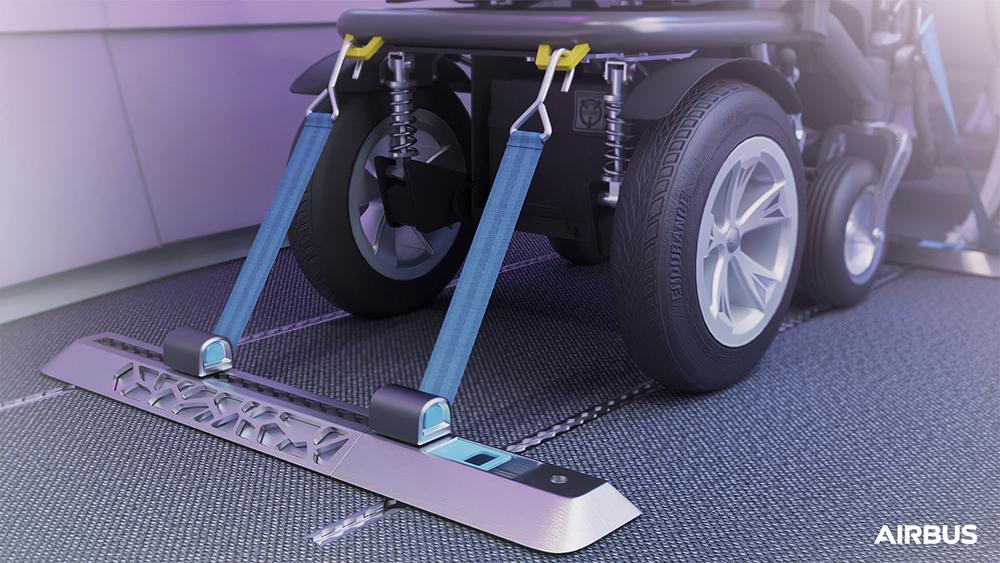
Airbus' ACCESS Beam concept, which temporarily converts aircraft cabins for wheelchair users.
HAMBURG—Recently proposed rules by the U.S. Transport Department will require airlines and aircraft manufacturers to have more rigorous standards for passengers with disabilities, and it appears Airbus might be staying ahead of the curve.
Hans-Gerhard Giesa, senior expert for human factors at Airbus, says the OEM is tackling the challenge by integrating new solutions into aircraft. “The rulemaking activities at the [Transport Department] are a clear indication that the expectations of our industry regarding accessibility of air travel are growing,” he says.
The Transport Department’s Notice of Proposed Rulemaking (NPRM) from the March 12 tackles the safe provisions for air travelers with disabilities while using wheelchairs, and it ensures increased access to safe and dignified air travel for those individuals. This NPRM proposes a new standard for onboard wheelchairs and a size standard for lavatories on twin-aisle aircraft, as recently defined for future accessible lavatories on single-aisle aircraft, among other topics.
“Independent from any regulation on this topic we have worked for a long time on solutions for lavatory access,” Giesa says, noting that Airbus developed the first wheelchair capable lavatory on a single-aisle aircraft in the market well before the implementation of the US rule.
Airbus’ passengers with reduced mobility (PRM) lavatory is facilitated via a simple conversion process. Two single lavatories are convertible into one PRM lavatory in a similar manner to those delivered in widebody aircraft. The wall between both lavatories can be temporarily retracted so entry is possible with an onboard wheelchair, allowing for assisted transfer to the lavatory.
Airbus has been working on more space-efficient improvements to its Space-Flex lavatories (first revealed in 2011) and it has designed a transfer seat for smaller single-aisle lavatories. “The transfer seat is a retractable seat installed inside the lavatory that allows an independent transfer from the onboard wheelchair to the toilet without entering the lavatory on the onboard wheelchair,” Giesa explains.
More recently, Airbus developed a concept called ACCESS Beam which temporarily converts the cabin for wheelchair users during turnaround. Additionally, Airbus has designed a cargo box prototype called Airportainer which is a pallet with a semi-rigid container bag that can be used to protect wheelchairs and other assistive devices during transport in the cargo hold. Giesa says Airportainer can maneuver using conventional ground and cargo handling equipment. “Ultimately, we think the solution will significantly reduce damage to wheelchairs with such easy-to-handle protection in the cargo area,” he says.
Meanwhile, the NPRM also requires the lavatory door to be able to close when a passenger is seated in an onboard wheelchair. An enabler for this is what Airbus calls the over-the-toilet function, which allows the wheelchair to be moved over the toilet bowl. According to Giesa, this feature has been developed in Hamburg together with the University of Applied Science.
Airbus is also considering other forms of disability such as hearing or visual impairments, and it has initiated a study into the feasibility of such an approach. “The technical approach is to develop a digital support that is compatible with the user's personal electronic devices and is supported by the aircraft connectivity backbone,” Giesa says.
With that technology, guidance and information can be provided that is tailored to different disabilities: for example, voice messages for visually impaired passengers, and text messages for hearing impaired travelers.





